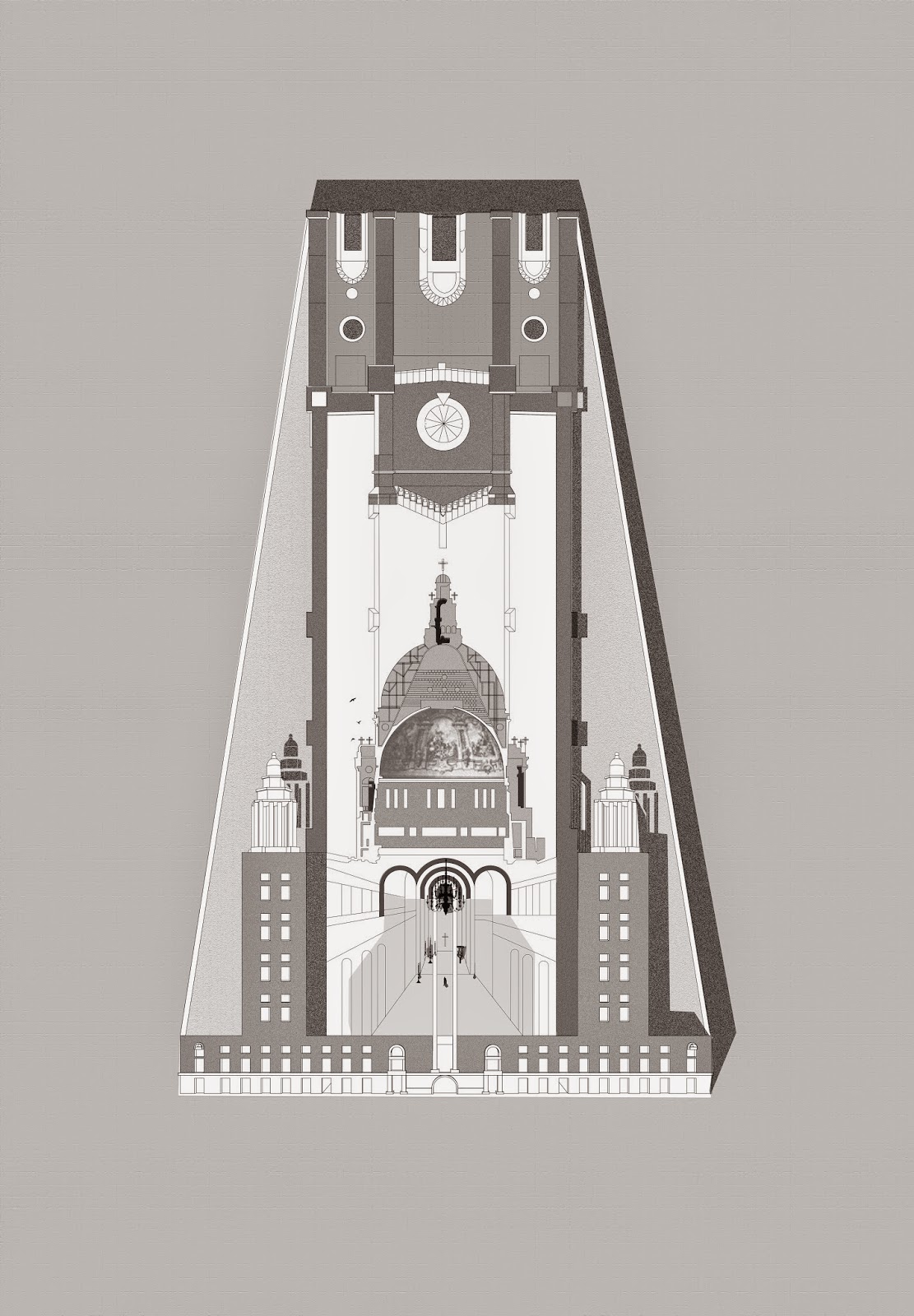Architecture Part II - Diploma - Year 4
University of Greenwich - Unit 20 - Infinite states.
Progress development of architectural representations and visuals.
Starting October through to date 12th-12-2014
This blog shows the learning process of different softwares and architectural representations in which we are developing here at the university of Greenwich - Architecture and Landscape department.
In addition to our progress development I have shown some other visuals, initial drawings and modelling reflecting our design unit development.
My project's drawings and aspirations are a reflection of Franz Kafka's famous book; THE TRIAL. Here I translate words and visions into architectural spaces following the character's journey (K) - Creating a city within the city of Greenwich. And in this blog I'm presenting some of these imaginary architectural spaces reflecting the ambiguity of the writer's text.
All experiments and developments were highly reflected in my design process in terms of 3D modelling, rendering and 3D model printing.
Noor Kassam
Future Representations
Friday, 12 December 2014
Thursday, 11 December 2014
3ds Max model render - Visual
Here is a visual of part of the 3D model - after using 3ds Max for rendering and adding textures, lights and shadows. Facades and architectural details were the main focus in terms of light usage and shadow outlining.
Saturday, 6 December 2014
THE TRIAL - FRANZ KAFKA (Chapter 9 - The Cathedral)
This drawing was inspired from chapter 9 of the book - The Cathedral. Here I was trying to show all faces of the cathedral in one drawing - another experiment with the 2,3 dimensional effects which gives the drawing that feel which has been strongly presented in Kafka's writings. The front facade was taken from the site context where this building is taking place - borrowing elements from the site to complete the overall scheme of the journey. This will be the main focus in the next stage to develop the rest of the drawings as the scheme blends in with the site surroundings.
This drawing was produced using Rhino, Autocad and Photoshop.
*3D-2D modelling + Photoshop rendering. Unit 20 - Infinite States.
Thursday, 4 December 2014
Fragments within site context - 3D printed model
Here is my first 3D printed model where I experimented with the fragments within the site context.
To produce this model I had to produce the 3D model using Rhino then import it as a STL file into a software called Zprint which detects all the bad surfaces in the 3D model before sending it to the 3D printing machine. There you can fix those surfaces and save the file as necessary before proceeding.
Tuesday, 2 December 2014
3D modelling - 3D printing preparation
Here is my work in progress preparing the 3D model to be 3D printed. We were introduced to a new software called Zprint which enables us to have our models inspected before having the model printed.
Thursday, 27 November 2014
THE TRIAL - FRANZ KAFKA (Chapter 7 - The Advocate - The Manufacturer - The Painter)
Chapter 7 - This drawing depicts my vision of the art - manufacture - paint hall which K passed by through his journey. My vision here exceeds what is there in his journey to a new piece of architecture that exists to serve a function in a specific place and time. The style of drawings used here is to present and show the ambiguity of the places that K goes to during his journey of confusion and disorientation - that feeling of being trapped. This drawing has been produced using Rhino as a 3D model then imported into Autocad for final 2D additions making the drawing an elevational plan yet having the 3D visual to it. Editing and rendering were done using photoshop afterwards.
*3D-2D modelling + Photoshop rendering. Unit 20 - Infinite States.
Friday, 21 November 2014
Advanced photoshop session
In this session we were taught how to apply masks over layers - this allows us to apply changes and adjustments without messing with the original image or layer we are working on. It's like applying a layer on top of a layer.. Very useful for certain tasks and effects.
We were also introduced to being able to save a snapshot within history that allows us to retrieve our work even after making lots of changes. It is very useful knowing that photoshop's history doesn't save old actions and has a certain limit to what it can save.
Another very useful thing I found was the action recording tab which allows me to record my action and all adjustments and apply them later on if needed.
This is really important when managing many images at the same time as it allows you to edit and apply the same modifications.
Subscribe to:
Comments (Atom)



















